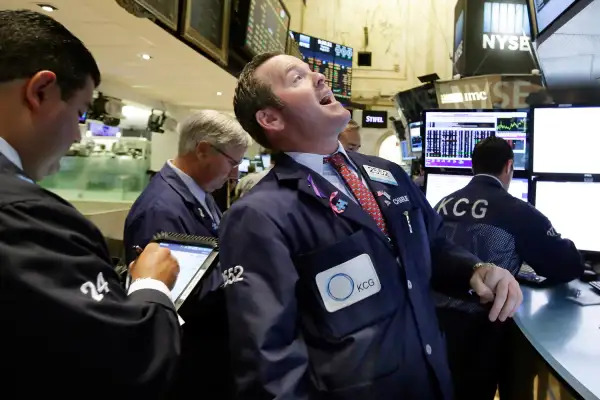This Could Throw Cold Water on the Dow's 1,000-Point Rebound
Money is not a client of any investment adviser featured on this page. The information provided on this page is for educational purposes only and is not intended as investment advice. Money does not offer advisory services.

For the second straight day, stocks soared on better-than-expected economic news.
After Thursday's jump of more than 369 points, the Dow Jones industrial average is now up nearly 1,000 points in the past two days.
While that doesn't erase the Dow's 1,900-point decline between Aug. 17 and Aug. 25, the bounce back went a long way toward calming nerves on Wall Street.
Don't be surprised, though, if the jitters return on Friday or next week.
Why?
For starters, in volatile times investors have a tendency to take profits heading into a weekend — if for no other reason than to guard against potential surprises that might hit the Asian markets before trading begins in New York on Monday.
It's also important to remember why stocks surged on Wednesday and Thursday in the first place.
Rate Hikes May Be Off
When stocks were plummeting at the start of this week, investors feared that cratering equities might be signaling a much weaker than expected economy ahead.
But on Wednesday came what Wall Street interpreted as good news: A key Fed official indicated that as a result of recent global market shocks, the case for the Federal Reserve hiking interest rates in September was "less compelling." That means the Fed isn't likely to tap the economy's brakes anytime soon.
Then the Commerce Department reported that orders for durable goods rose faster than expected, damping down recession worries.
And on Thursday, the Commerce Department came back and revised its earlier assessment of economic growth in the second quarter. Instead of growing at an annual rate of 2.3% as was thought, U.S. GDP actually expanded a robust 3.7% in the spring.
That seemed to slam the door on all this recession talk.
However, some market watchers believe the GDP report also may have reopened the door to the Fed raising rates in September.
Rate Hikes May Be On
Brian Singer, a portfolio manager at William Blair, says the new batch of good economic data — and Wall Street's positive reaction to it — will likely trigger "a cat and mouse game between the markets and the Fed" that could go on for a while.
Here's how that game is played: When there's good economic news and equity prices rise, that's likely to renew talk of rate hikes. And such talk is likely to be jeered by Wall Street in subsequent days.
Conversely, if there's weak data that sparks a market sell-off, that will likely prompt speculation that the Fed will postpone rate increases. And that could push the equity markets higher.
So investors should brace themselves for ongoing volatility.
A Third Option
To be sure, there's a small but growing group on Wall Street that believes a September rate hike would actually be bullish, not bearish.
"If anything, if the Fed were to raise rates that would send a signal that the Fed believes economic growth is strong enough to withstand higher rates," says Kate Warne, investment strategist at Edward Jones. "To us, that's good news, not bad news."
Conversely, if the Fed keeps rates at zero — and begins talking up the need for further stimulus through yet another round of quantitative easing, "that would be a huge confidence crusher," says Liz Ann Sonders, chief investment strategist at Charles Schwab.
At the very least, a Fed rate hike in September "takes off the table one of the market's big uncertainties," says Scott Clemons, a managing director for Brown Brothers Harriman.
That's the uncertainty of when the Fed will finally pull the trigger.
But for now, the cat and mouse game goes on.
